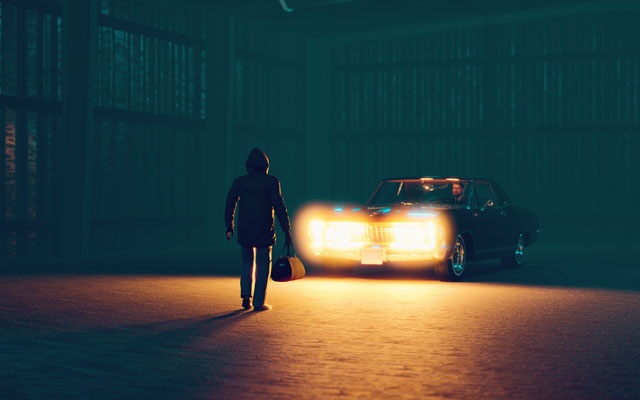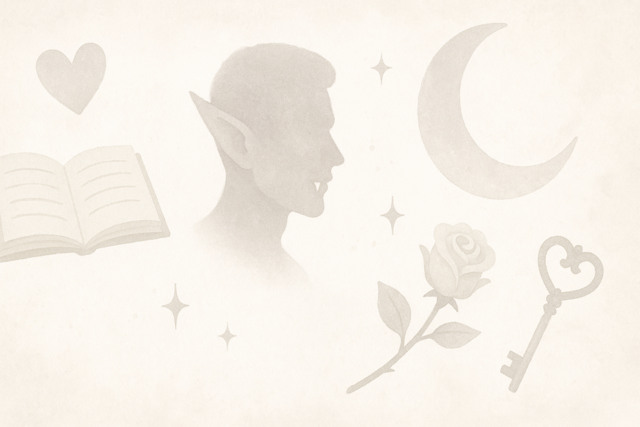Climax Building in Novel Writing
Frequently, it has been said that the easy part in writing the novel is getting the reader's interest; the hard part, however, is in keeping it.
And so, the challenge of writing the novel then becomes: How to not only initially engage the reader, but also how to create memorable characters, (especially a likeable protagonist), whose journeys will sustain the audience's interest.
This is where the efforts to develop strong character arcs come into play. In order for the reader to become invested in the outcome of the story, he/she must first learn to care about the protagonist and his/her plight.
To satisfy these basic elements, the writer will need to fully flesh out the protagonist's desires and struggles to make him/her appear more human and relatable.
And while these criteria will aid in forming the basis for an engaging read, the writer must take additional steps to create truly riveting plot lines.
A. Mounting Tension & Secondary Plots
For example, to instill the idea of mounting tension throughout the novel, writers are instructed to space out their central crises (time sequencing), and to incorporate subplots into the overall storyline. Note: Also referred to as counterplots, underplots, B stories and C stories, subplots are secondary sequences of action that either are parallel, or run in contrast to, the main plot.
In being mindful of the timing sequences used between climactic points, writers are able to prolong the readers' attention, as they wait patiently for the next "big event."
Think, for a moment, of how soap opera stories are developed. They never lay all their cards on the table all at once. Rather, a well-conceived soap opera only shows its viewers enough of the storyline to pique their interest.
Over time, the writers of these daily dramas present additional information, while leading up to the key scene, when all of the issues are put forth. Usually, this big climactic scene occurs on a Friday, therefore, requiring viewers to go the entire weekend wondering how it all worked out in the end.
With respect to building subplots into the story, writers can benefit from studying Patrick O'Brian's Master & Commander: The Far Side of the World, an early 19th century episodic series depicting life on the high seas.
Not only does O'Brian's work involve a colorful collection of characters, it also includes two very compelling subplots featuring Captain Aubrey's second-in-command, Lt. James Dillon -- whose courage comes to be tested -- and the wife of a superior officer, whose position of power could potentially wreak havoc upon the high commander's career.
B. Major Climax
After carefully laying out the plot points of the story, and successfully integrating a selection of tension-building techniques (time sequencing, subplots and built-in deadlines for characters to accomplish their goals), the time has arrived for the writer to begin crafting the details of the major climactic scene, and considering the optimal place in the story for it to occur.
With regard to placement of the climax, writers must bear in mind that they will need a chapter to present the big dramatic scene, but they will also need several more chapters to provide a well-formulated resolution, and to describe the impact of both the event itself, and the aftermath, upon the protagonist/central characters.
Therefore, the climax will need to be a few chapters in from the end of the book, as opposed to directly at the conclusion. Referred to as the penultimate chapter, it received this title because, even though all the events culminate within this one scene, it is merely being used to set-up the subsequent chapter(s) in which the final outcomes are explained.
Take for example, George Orwell's novel, 1984. Within Orwell's work, the major dramatic question is whether his main character, Winston Smith, accepts his apparent fate, thereby succumbing to the influence of "Big Brother," or whether he rails against the forces that seek to marginalize society as a whole.
And even though Orwell's 1984 comprises numerous plot lines, each one links back to the identifiable major source of conflict.
C. Black Moment
A strong literary term, "black moment," relates to that pre-climactic event, when the protagonist is confronted with his/her darkest hour. Within the entire story, the black moment is the culmination of all the central character's fears and challenges -- in essence, the point at which the protagonist reaches his/her absolute bottom.
This encounter then plunges the protagonist into a dizzying spin, which can result in dire, life-altering consequences. For example, the writer may show the protagonist face-to-face with his/her biggest obstacle, most profound fear, or shocking revelation.
The black moment is a defining point in the novel, for it is followed by the major climax, whereby the protagonist's fate is first tested, and then solidified.
At this pinnacle moment, to champion his/her situation, the protagonist is forced to tap into his/her inner strength or elicit valuable life lessons learned throughout the course of the story. Upon taking a decisive action, the protagonist is able to demonstrate his/her true character, and satisfactorily conclude the story.
D. Climax Summary Questions
Some of the important questions writers should ask themselves when preparing both the climax, and the conflict resolution, include:
Climax
-
Does it encapsulate all of the details laid out in the story?
-
Does it satisfy all of the basic elements of timing, character development, scene, tone, and realism?
-
Is it written in the same style and tone as all of the book's other sections?
-
Is there an ample amount of mounting tension leading up to the climax?
Conflict Resolution
-
Does the wrap-up provide a satisfying explanation, without going into too much depth?
-
Does the outcome cohesively match the original and ongoing details of the story?
-
Does the concluding scenario leave the story open for the readers to interpret their own ending?
Upon recall, a novel's critical scenes may seem incredibly numerous. However, upon closer reflection, the number of critical scenes within a novel is usually a mere handful.
The skewed perspective results from the significant role each of the critical scenes plays within the novel. Thus, even if a novel has only four critical scenes, when they are liberally scattered throughout the story, the reader's take-away is that the novel contains a series of key defining moments.
A. Critical Scenes: Definition
Before we go further to discuss the production of critical scenes, we will first provide you with a basic working definition of the term.
Critical Scenes -- These are the moments in the story which either directly relate to the inception of the protagonist's core struggles, or contribute to the transformation of his/her prevalent behaviors.
Collectively speaking, a novel's critical scenes could, in fact, tell the whole story. However, without the support of informative opening passages, colorful descriptive passages, and compelling dialogue, critical scenes, on their own, are basically a series of action stages without the wonderful imagery and meaningful insights.
B. Suggested Number of Critical Scenes
When attempting to determine the specific number of critical scenes a novel should have, the basis for the final count should be a direct outgrowth of the novel's construction. As a rule of thumb, novels typically contain between three and 10 critical scenes.
On average, a novel is composed of 130 pages. Thus, the number of critical scenes needs to be in balance with the overall flow of the story, and the skeletal framework in place.
For example, consider the novelist who requires 25 pages to introduce the story, setting, and central characters. Within such slow-to-unfold stories, fewer critical scenes may be needed, as the story is so incredibly heavy on description and explanation.
In contrast, the novelist who jumps right into the story by leading with a major conflict, is likely to have more space devoted to critical scenes. Thus, he/she is apt to build more tension-filled situations into the novel.
C. Placement of Critical Scenes
Prior to sitting down and writing a sequence of critical scenes, it is important, (if not essential), that writers spend time laying out their outline and major plot points.
Such a structured framework aids the writer in assessing the types of critical scenes they need to create. Granted, for novelists, exceptional writing skills are paramount.
Yet, even with top-notch writing abilities, a novelist still needs to be able to shape a compelling, seamlessly flowing story. To accomplish such a feat, novelists need to understand that critical scenes do not arise out of mid-air, but rather, as part of the larger context of the story.
By the time the reader reaches a critical scene, it is customary, (unless the critical scene is told in flashback), that the major characters in the novel have already been introduced, the background and setting of the story commented upon, and storylines spun into motion.
Thus, by the time the reader reaches a critical scene, he/she has a basic sense of the concept of the story, descriptions of the major characters, and an idea as to the direction in which the storyline may go.
D. Structural Frameworks -- Essentially, there are two structures in which writers may construct their stories:
Linear -- Within the linear framework, writers lay out their story chronologically, building on the past, with future occurrences.
Nonlinear -- Within the nonlinear framework, writers set up their story according to how they want to present it to their readers. Hence, it may be partially told in chronological sequencing, part in flashbacks, and/or part in future events.
E. Germination of Ideas
Once you have a solid working understanding of the framework needed to create a satisfying novel, specifically the components of critical scenes, (positioning and quantity), you can then move ahead to the next phase: the development and writing of critical scenes.
F. Reality as Inspiration
To create memorable, well-formulated critical scenes, novelists will be well-served spending time rehashing their previous life experiences to come up with realistic models on which to base character profiles and intermittent interactions.
Further, the quasi-research group method also allows the writer to bridge differences between fictional characters and real-life people. This is what is known as "weaving," whereby the novelist draws ideas for the story from real-life instances.
G. Observation
Even the person with the most eclectic life experiences will eventually come up short when attempting to write about a situation outside their knowledge base.
Consider, for example, the novelist who has never married, but has traveled extensively throughout the world, ridden on the backs of camels, swum the English Channel, and even met, one-on-one, with South Africa's champion on apartheid, Nelson Mandela. He or she may have difficulty writing about the personal interactions that go on between partners within a marriage.
To come up with the specific nuances and, thus eventually create key critical scenes between the partners, the uncommitted novelist may opt to go somewhere, such as a grocery store or travel agency, and observe the exchanges between married couples.
In and of itself, observation is a form of research.
Yet, observation is considered to be a more direct form of research, whereby the writer gets to witness interactions as opposed to simply reading about them.
H. Research (reading & study)
At times, first-hand observation is not always possible or prudent.
Thus, when finding persons representative of the novelist's area of interest becomes a grave challenge, it may make more sense for the writer to simply seek out printed materials, case studies, or newspaper clippings.
Both fiction and nonfiction writers rely heavily on research as a method for collecting valuable background information for their central story ideas and lead characters.
Even though the novel is to be a fictional story, the novelist will still want to spend time learning about similar, real-life events, so that he/she may accurately present their made-up situations based upon realities found in the world.
The reason the novelist must be thorough in his/her research, is that both nonfiction and fiction literary works need to incorporate real concepts, such as how a car works, actual geographical placement, and other practical details.
As a whole, the reality component helps to strengthen the novelist's story and, in bringing out rich, insightful details, creates critical scenes that transcend the merely average, making them truly memorable.


























